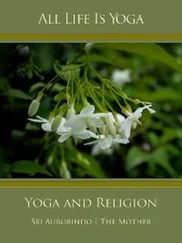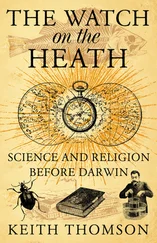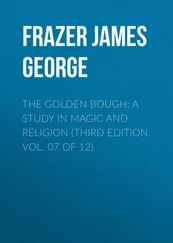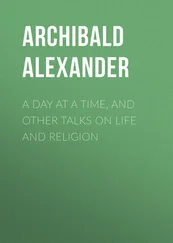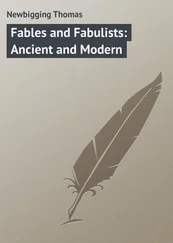Vikernes, Varg - Varg Vikernes - Sorcery and Religion in Ancient Scandinavia
Здесь есть возможность читать онлайн «Vikernes, Varg - Varg Vikernes - Sorcery and Religion in Ancient Scandinavia» весь текст электронной книги совершенно бесплатно (целиком полную версию без сокращений). В некоторых случаях можно слушать аудио, скачать через торрент в формате fb2 и присутствует краткое содержание. Жанр: Старинная литература, на английском языке. Описание произведения, (предисловие) а так же отзывы посетителей доступны на портале библиотеки ЛибКат.
- Название:Varg Vikernes - Sorcery and Religion in Ancient Scandinavia
- Автор:
- Жанр:
- Год:неизвестен
- ISBN:нет данных
- Рейтинг книги:3 / 5. Голосов: 1
-
Избранное:Добавить в избранное
- Отзывы:
-
Ваша оценка:
- 60
- 1
- 2
- 3
- 4
- 5
Varg Vikernes - Sorcery and Religion in Ancient Scandinavia: краткое содержание, описание и аннотация
Предлагаем к чтению аннотацию, описание, краткое содержание или предисловие (зависит от того, что написал сам автор книги «Varg Vikernes - Sorcery and Religion in Ancient Scandinavia»). Если вы не нашли необходимую информацию о книге — напишите в комментариях, мы постараемся отыскать её.
Varg Vikernes - Sorcery and Religion in Ancient Scandinavia — читать онлайн бесплатно полную книгу (весь текст) целиком
Ниже представлен текст книги, разбитый по страницам. Система сохранения места последней прочитанной страницы, позволяет с удобством читать онлайн бесплатно книгу «Varg Vikernes - Sorcery and Religion in Ancient Scandinavia», без необходимости каждый раз заново искать на чём Вы остановились. Поставьте закладку, и сможете в любой момент перейти на страницу, на которой закончили чтение.
Интервал:
Закладка:
1.6 The Patriarchy
With time the right to become queen was passed down from generation to generation, from mother to daughter, so that women no longer could or needed to win contests to become queen. The daughters of the queen automatically inherited her title when she died. The sons inherited nothing, though, because the noble blood was passed down from mother to daughter, so if they wanted to become kings themselves they had to go out into the world and find princesses to marry, like Askeladden and most other men do in the fairy tales. When man realised that it was the sexual intercourse that made the women pregnant, and not contact with green and fertile boughs, the Sun rays or rain drops, the society changed. It turned into a patriarchy, and all of a sudden the sons inherited their titles form their fathers, and not the daughters from their mothers. Also, the young princes no longer had to venture into the unknown world in search of a beautiful princesses (queens) to save, from terrible kings, described in the fairy tales as “trolls”, “dragons” or “giants”, or described as Þjazi in the Scandinavian mythology. Instead they could stay home and arrange marriages like we still do today.
The king's responsibilities however did not change with the coming of patriarchy, and the patriarchal kings were held responsible if anything went wrong, just like the matriarchal kings had before them. It happened, as late as in the Viking Age in Scandinavia, that the kings were executed and replaced by another noble man, because they did not live up to the expectations. The patriarchal kings also had the same restrictions as the matriarchal kings had had. The practical significance of the transition from matriarchy to patriarchy was actually minimal. The biggest changes can actually be seen in the mythology, which of course had to be rewritten (or rather: retold) and changed a lot. This was not always easy, and several myths were in this process made so difficult to comprehend that they lost their meaning for later generations. A good example is the myth I have already mentioned, about the god Skanþan/Skaði who turned into a goddess, and the goddess Nerþuz/Njörðr who turned into a god.
The sorcerer who was unable to keep up with his time, who did for some reason not become a god instead of just being a sorcerer, lost most of his influence in society during the Iron Age. He was no longer king and was reduced to some sort of medicine man, a healer, known from the Viking Age in Scandinavia as a seiðmaðr (“man of the customs”, “man of the traditions”), because of his traditional sorcery practice. Finally, after the introduction of Christianity, the sorcerers disappeared completely, and the last remaining sorcerers were probably burned at the stake by the Christians. However, their sorcery survived in the religion, both the European one and the Asian Christianity. When the early Christians failed to eradicate the European customs, holidays and symbols they simply Christianised them and made them their own.
2.0 The Calendar Woman
Our modern calendar has 12 months and each month has 28 to 31 days. All in all there are 365 days (and 366 every leap year). The Scandinavian Bronze Age calendar, known from a rock carving of a woman, found in what is today known as Bohuslän (in Sweden), has 13 months, each with exactly 28 days. There was also a New Year's Day, that every leap year lasted for two days, so all in all it has 365 days (and 366 every leap year) too. This is in fact the most accurate calendar known from the ancient world.
All the months had exactly 28 days and 4 weeks, so the 1 st, the 8 th, the 15 thand the 22 ndday of each month was always a Sunday. Likewise the 2 nd, the 9 th, the 16 thand the 23 rdday was always a Monday, and so forth. The New Year's Day was not a Sunday, Monday or any other day, but the New Year's Day.
The week had 7 days, because the sorcerers could only see seven celestial objects on the sky, which they identified as the most important spirits of nature, later to be identified as deities: Sunþon/Sunna (Lat. Sol), Manan/Mani (Lat. Luna), Tíwaz/Týr (Lat. Mars), Woþanaz/Óðinn (Lat. Mercurius), Þunaz/Þórr (Lat. Juppiter), Fraujon/Freyja (Lat. Venus) and finally Haimadalþaz/Heimdallr (Lat. Saturnus). The month had 4 weeks because the Moon had 4 phases: the lunar eclipse/rebirth, the new Moon/birth, the full Moon/life and the waning Moon/death.
Day Norse name proto-Nordic name
Sunday Sunnudagr Sunþudagaz
Monday Mánadagr Manadagaz
Tuesday Týsdagr Tíwadagaz
Tuesday Tírsdagr Tíwadagaz
Wednesday Óðinsdagr Woþanadagaz
Thursday Þórsdagr Þunadagaz
Friday Freyjudagr Fraujudagaz
Friday Frjádagr Frijodagaz
Saturday Laugardagr (“cleaning day”) Laugadagaz
Saturday - Haimadalþadagaz
The Ancient Man believed that the spirits and the deities lived side by side with them, and every month was therefore seen as a house of a deity, who was greeted and welcomed the first day each month. The gods were greeted by the kings/lords and the goddesses by the queens/ladies.
You might believe that it would be impossible or at least difficult to find the names of the 13 months of the ancient calendar, but it actually isn't; they are all listed in the Scandinavian mythology, logically as “houses” or “homes” of the deities.
The Divine Houses (Norse)
1. Valaskjálfr (“the shivering of the chosen/fallen”), home to the god Váli.
2. Himinbjörg (“sky mountain”, originally “hidden mountain”), home to the god Heimdallr (originally a hermaphrodite).
3. Landvíði ("wood land"), home to the god Víðarr.
4. Søkkvabekkr ("deep creek", "sinking creek"), home to the goddess Sága.
5. Þrúðheimr ("strength world"), home to the god Þórr.
6. Breiðablik ("wide flash"), home to the god Baldr.
7. Nóatun ("ship yard"), home to the god (goddess) Njörðr.
8. Glítnir ("sparkling"), home to the god Týr, alias Forseti.
9. Folkvangr ("folk meadow"), home to the goddess Freyja.
10. Alfheimr ("white world"), home to the god Freyr.
11. Glaðsheimr ("shining light world"), home to the god Óðinn.
12. Þrýmheimr ("noise world"), home to the goddess (god) Skaði.
13. Ýdalir ("yew dale"), home to the god Ullr, alias Höðr.
The Divine Houses (proto-Nordic reconstructions)
1 Walaskelbijo, home to the god Walan.
2. Hemenaberga, home to the hermaphroditic deity Haimadalþaz.
3. Landawaíduz, home to the god Wídanaz.
4. Sinkwabankiz, home to the goddess Sagon.
5. Þruþohaimaz, home to the god Þunaz.
6. Braidoblika, home to the god Balþuz.
7. Nowatuna, home to the goddess Nerþuz.
8. Glítnijaz, home to the god Tíwaz, alias Furasitan.
9. Fulkawangiz, home to the goddess Fraujon.
10. Albahaimaz, home to the god Fraujaz.
11. Gladashaimaz, home to the god Woþanaz.
12. Þrímahaimaz, home to the god Skanþan.
13. Íwadalaz, home to the god Wulþaz, alias Hadnuz.
The first day of the Scandinavian calendar was not the 1 stof January, but the New Year's Day, a day between the thirteenth and the first month. It was therefore seen as a world outside all worlds. It was not in the house of a deity, neither in the spirit garden nor in the realm of the dead, it was between autumn and winter, beyond life and death, and was therefore known in the Bronze Age as Medagardaz. We know this garden from the Scandinavian mythology as Miðgarðr ("the garden in the middle").
When I describe the ancient traditions and holidays I use the ancient calendar, and I need to in order to make any sense of it all. The week began with the Sunday, and a celebration of the Sun's life-giving and life-preserving force. They often ate circular shaped food, like pancakes or other round cakes, and ingredients were often vegetables, fruits and meat from animals sacred to the Sun. The Sunday began when the Sun set on the Saturday (around 21:00), and therefore the celebration of the Sunday began on the Saturday eve. The celebration often lasted until dawn Sunday morning. It was sacrilege to work on the Sunday, and the day was supposed to be dedicated to rest, music, poetry and joy.
Читать дальшеИнтервал:
Закладка:
Похожие книги на «Varg Vikernes - Sorcery and Religion in Ancient Scandinavia»
Представляем Вашему вниманию похожие книги на «Varg Vikernes - Sorcery and Religion in Ancient Scandinavia» списком для выбора. Мы отобрали схожую по названию и смыслу литературу в надежде предоставить читателям больше вариантов отыскать новые, интересные, ещё непрочитанные произведения.
Обсуждение, отзывы о книге «Varg Vikernes - Sorcery and Religion in Ancient Scandinavia» и просто собственные мнения читателей. Оставьте ваши комментарии, напишите, что Вы думаете о произведении, его смысле или главных героях. Укажите что конкретно понравилось, а что нет, и почему Вы так считаете.

